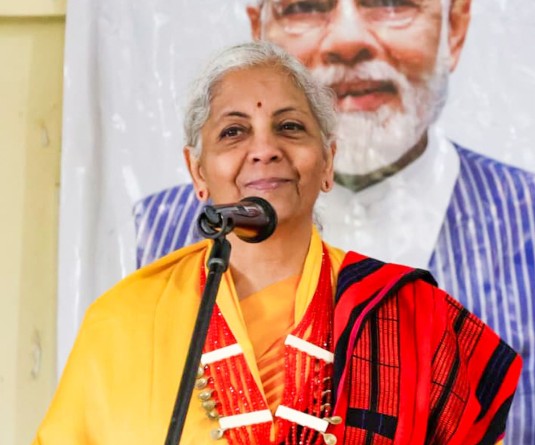
A talk by Easterine Kire held at University of Science & Technology Meghalaya
Meghalaya, February 14 (MExN): The students of the Department of English, University of Science & Technology Meghalaya were all agog to listen to Dr. Easterine Kire, the world acclaimed writer, novelist and story teller when she was invited today at USTM to give a lecture on ‘Literature and Representation-Opening up of Naga Universe.’
Dr. Easterine Kire started her lecture with an assertion that there is no conflict between Assamese literature and Nagamese literature, rather both are interdependent and lot of Assamese literature had dwelt upon Naga myths, folktales and referred the story of Joymoti which was adopted by the writer Padmanath Gohain Baruah, the founder president of Asom Sahitya Sabha. She then went on narrating how she was influenced by the oral story telling tradition of Naga which is very much akin to African literary tradition, specifically how she owed inspiration from Nigerian writers like Chinua Achebe, Nadine Gordimer.
Urged by a dire need to establish Nagamese written literature and to convert the oral tradition of narratives into written literature, Dr. Kire took up the task of reversing the stereotyped perception of North East that prevailed in the Indian literary circuit, the image of strife-ridden North East. Thus, came the first novel ‘A Naga Village Remembered’ in 2003 followed by A Terrible Matriarchy and then Mari, Bitter Wormwood, When the River Sleeps.
“I deliberately chose all my narratives to be portrayed in the war perspective to some extent and my characters are sculpted in times of war – World War II, Japanese Invasion in Kohima, war during British Colonial regime, post-Independence war when Nagas refused to be annexed within India and thus a chronology of political upheavals in Nagaland were depicted,” she stated.
She went on to say that, “However, my novels offer a wide range of perspectives, history, culture, social problems, political conflict, mysticism, and Naga spirituality.” Mentioning ‘Bitter Wormwood’, she explained that although the book was not taken in a good spirit by a section of readers as non –Naga readers are perhaps not ready to accept one fraction of reality, in the book, “I have tried to say that the people caught in the conflict were important, that their lives mattered.”
This is why the book centres around two families on either side and on the friendship that springs up in the third generation. The book has put forward the idea that a political problem can have a human solution, she elaborated. While reading one excerpt from ‘When the River Sleeps’, she explained “It begins as a physical quest for a stone that is rumoured to possess spiritual qualities. But for those who have not grown up in the culture in which the book is grounded, allegory will help the book yield meaning. But I think, even without allegory, it is simple enough for readers to understand that this is a book whose theme is about the importance of the spiritual over the material.”
According to a press release received here, the discussion was followed by an interaction with the students where different aspects of NE literature were analysed and it was asserted that National Media must stop stereotyping the image of North East and for that insiders like me have a great role to play to change the perception. Also she stated “scenario is changing gradually however, as more and more symposium, literary discourses are being hosted outside North East where poets, writers, litterateurs across all states share a common platform and such exchange of ideas would definitely contain stereotypization of North East.”






